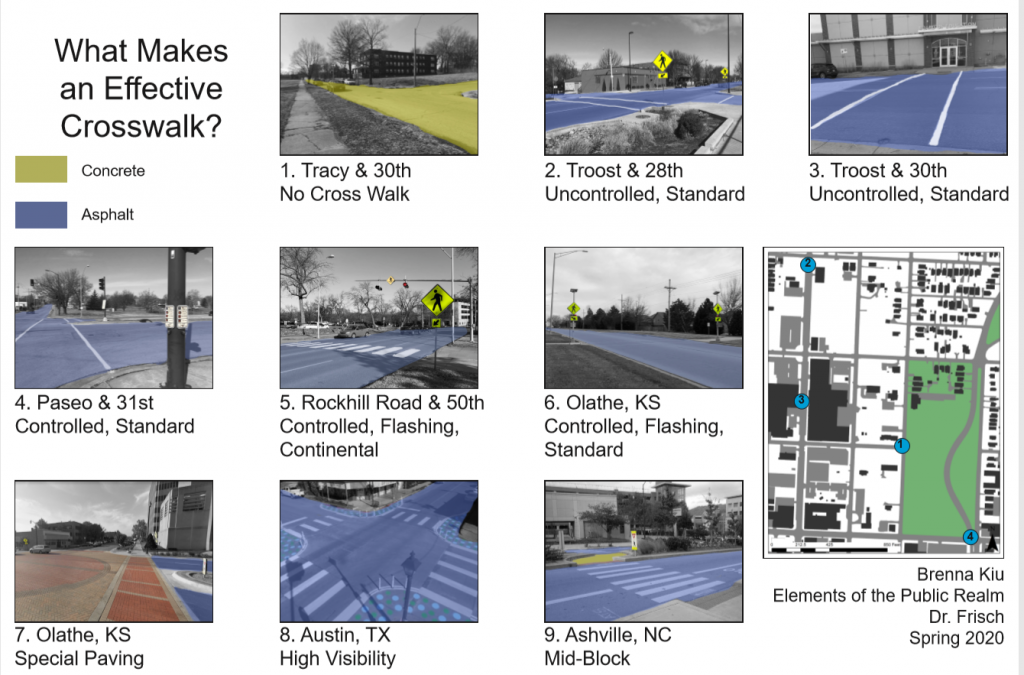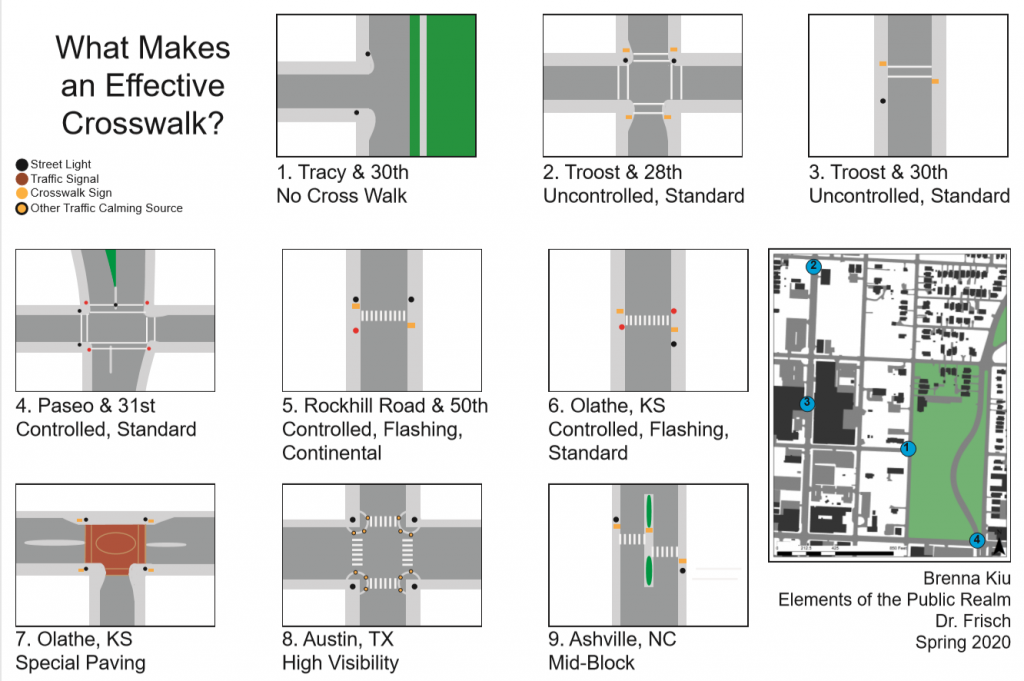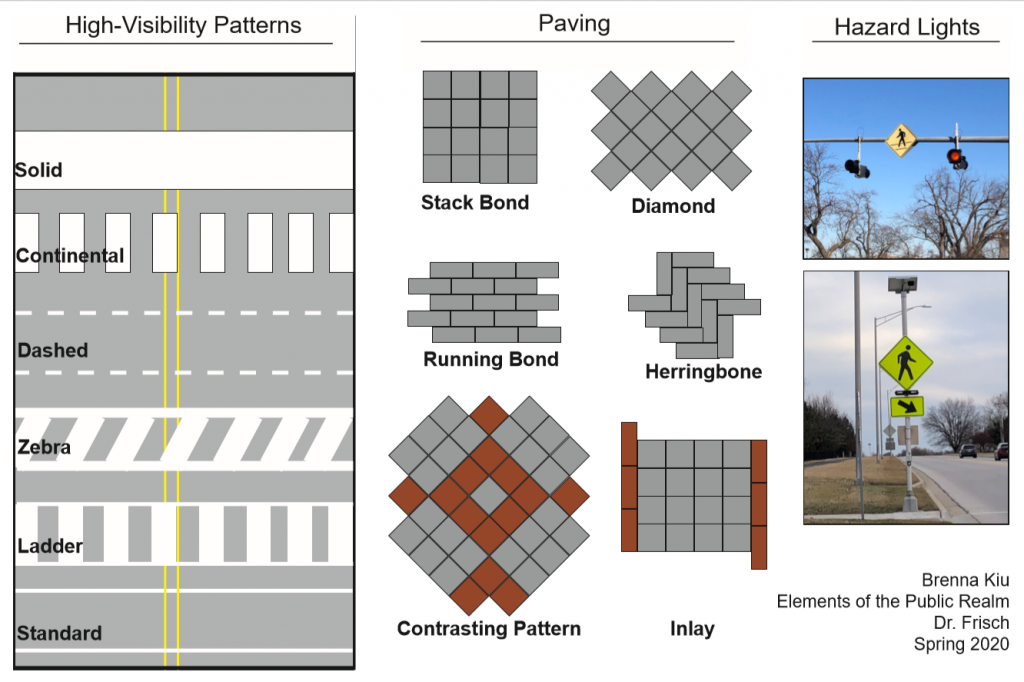
There are several different types of crosswalks which all have different psychological effects on both the pedestrian and the driver. It is my belief that the most effective crosswalks are the ones which change the monotony of driving. Many crosswalks are uncontrolled in our study area, meaning there are no traffic lights which signal to a driver that there is a pedestrian crossing. Streets like Troost and Paseo are difficult to cross and there are few, if any, crosswalks which lead to the park.

In the above image we can see the different kinds of features around a crosswalk. Some have flashing hazard lights, some are lit by streetlights in order to make the pedestrian visible during evening hours. Others are simply striped with a pedestrian crossing sign.

I believe the striping patterns are effective at telling pedestrians where to cross, but they are not great at getting drivers to slow down. Drivers are too accustomed to seeing striping on the roads, so it gives no sign that there could be anything special happening at a given intersection. Paving, however, does signal to the driver that this intersection is special. A change in paving gives the driver a change in mindset. Something different about the surface they are driving on lets them know that this is not just a street. Hazard lights can act in the same way. The lights on Rockhill Road are constantly flashing 24/7. Therefore, they cease to mean anything; they give no information to a driver. They flash whether or not there is a pedestrian crossing. However, the hazard lights in Olathe along Ridgeview Road flashing only if there are pedestrians crossing at that time. These lights provide new information to drivers which tells them to slow down.